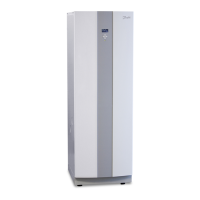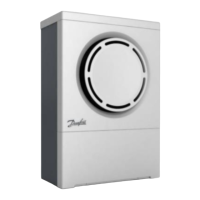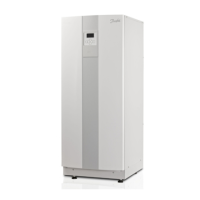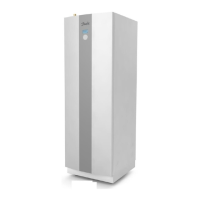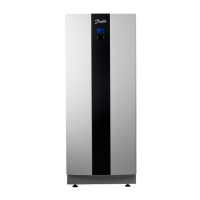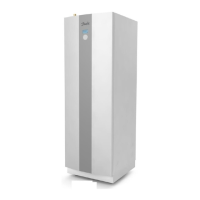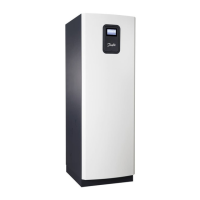8 Brine installation
8.1 Heat sources
Bedrock heat
To use rock as the heat source one or more boreholes is/are drilled
and the brine hose is lowered into it/them. The hole is filled with
water and a fitting with a weight is fastened to the hose before it is
lowered.
Borehole in rock as heat source.Figure 58:
Lake heat
When lake water is used as the heat source one or more brine coils
is/are submerged in the water. The coils must be anchored to the
bottom with weights or a net to prevent them floating.
Lake water as heat source. Figure 59:
Groundwater heat
Ground water can be used as a heat source on the condition that
there is a sufficiently large flow of ground water in the borehole. A
submersible pump is lowered in one hole and pumps up ground-
water, which flows through a separate heat exchanger, and is then
returned through another borehole. The heat pump has a short
brine circuit that works directly against the separate groundwater
exchanger.
Ground water as heat source. Figure 60:
When ground water is used as a heat source the heat pump instal-
lation must be equipped with a flow guard (available as an acces-
sory from the Danfoss range) that stops the heat pump if the flow
in the brine pipe is too low, which can create a risk of freezing in
the ground water exchanger.
Ground heat
The stored heat energy in the ground can be used as a heat source.
In this case a brine loop (or loops) is/are laid under the surface layer
of ground.
Ground as heat source. Figure 61:
Air heat
The DHP-A and DHP-AL heat pumps are equipped with an outdoor
unit that uses outdoor air as a heat source. DHP-A, -AL can make
use of the energy in the air outdoors down to temperatures of
--20°C. To obtain the correct airflow through the outdoor section it
is equipped with a fan.
Connecting outdoor unit to use air as heat source.Figure 62:

